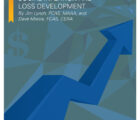I started writing this on February 11, 2018, after stock markets all over the world had a tumultuous two weeks. Some pundits called the huge swings in the stock indices everything from a signal of doom, to a correction, to the product of rogue robot trading. Others claimed it was due to the unsold USA treasury bills, the new tax law and more. One analyst even predicted another “Crash of ’29!” If you have a favorite reason I didn’t mention, add it to the mix.
As I resumed writing this several weeks later, the markets were still volatile, but the huge swings in values had subsided. But late March saw another round of large equity market swings. Were we looking at another crash like that seen in 1929? (And no, I don’t remember it.) Was the period from January 26, 2018, to February 8, 2018, the abnormality, or was the run up prior to January 26, 2018, the anomaly? Look at a graph of any of the indices, and the period of time you select can change your perspective on your answer.
Is this recent phenomenon a trend, a seasonal adjustment, a market correction or something else? If you know the answer, you can make a lot of money in the next few weeks. If you THINK you know the answer and are wrong, you can LOSE a lot of money in the next few weeks. Of course, you won’t win or lose unless you are playing the game. Or unless you have investments in your 401(k). Or unless your company runs into good times or bad times and it affects your job or salary. Or unless market forces trigger massive deflation or inflation. Well, I guess we are all “in the game” to some extent.
But how does the recent stock market volatility influence what we do professionally? Certainly, those of us who work with economic capital models realize that it has an impact on the asset side of our models and that it will likely have an impact on the economic scenario generators we will use in the future. Since the drop happened after year-end 2017, assets for companies holding stocks might be down considerably from what they reported in their Annual Statements.
What does the stock market performance have to do with the economy? Is stock market performance a lagging indicator, a leading indicator, random variation or just noise?
The answer to the first question will have a bearing on what we select as exposure trends, and the answer to the second will determine just how much of a bearing it will have.
I throw in a third question: Are there other, less-publicized indices we should be watching that have a higher correlation to the work we do than the widely publicized stock indices?
The stock indices get a lot of attention when they “go wacky” and are largely ignored when they are stable and boring. Is there a potential for the index you are using for ratemaking or loss reserving to have a wacky period as we saw in stocks? If so, what do we do?
What if the “something else” has to do with the process or product’s life cycle? Remember PalmPilots? Or Newtons, an even earlier version of the personal digital assistant? They had states of early adoption, early majority, late majority and some laggards. Now, the entire cycle has been run, and you can no longer buy a new PalmPilot. And some of you are wondering what a “Newton” was (https://en.wikipedia.org/wiki/Apple_Newton). Does a drop in employment in a manufacturing process indicate expected declines in production or mask increased production due to increased automation?
Many of us have seen what initially appeared to be an aberration in the data, only to find out that it was actually a change in process. I recall seeing defense and cost containment payment counts drop precipitously while the average amounts were multiples of their previous values. “Nothing has changed,” was the answer from the claims department when I asked for a cause. Later, I found out that instead of paying attorney fees when presented, they required the outside attorneys to bill them on a periodic basis. The total costs did not change much, but the frequency and severity certainly did.
As I continue to work on pricing, loss reserving and economic capital model projects, I need to ask myself: Is it a trend, an aberration, a new level of activity or something else? We all need to ask those questions and take a moment to ponder every time we use trends.











